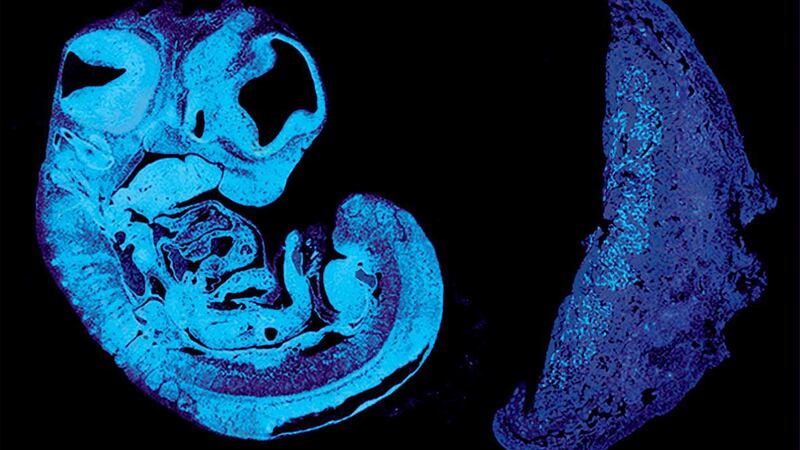A tug of war goes on between genes inherited from the mother and father in the womb, revealing that the “battle of the sexes” begins before birth, scientists have found.
The foetus uses a hormonal signal to control its supply of nutrients from the placenta, said scientists from the University of Cambridge. As it grows in size, it has to communicate its need for more nutrients to its mother, receiving nutrition via blood vessels in the placenta.
In a study of genetically-engineered embryonic mice, published today in Developmental Cell, the scientists found that the foetus produces the signal, known as IGF2, to encourage the growth of blood vessels in the placenta, and that this involves a “tug of war” between genes inherited from the mother and father.
While only the copy of IGF2 inherited from the father is active, a maternally expressed gene acts to counterbalance the additional demands for food made by IGF2.
Lead author, Dr Miguel Constancia, said: “One theory about imprinted genes is that paternally-expressed genes are greedy and selfish. They want to extract the most resources as possible from the mother.
“But maternally-expressed genes act as countermeasures to balance these demands.”
“In our study, the father’s gene drives the foetus’s demands for larger blood vessels and more nutrients, while the mother’s gene in the placenta tries to control how much nourishment she provides.
“There’s a tug-of-war taking place, a battle of the sexes at the level of the genome.”
Dr Ionel Sandovici, the paper’s first author, said: “As it grows in the womb, the foetus needs food from its mum, and healthy blood vessels in the placenta are essential to help it get the correct amount of nutrients it needs.
“We’ve identified one way that the foetus uses to communicate with the placenta to prompt the correct expansion of these blood vessels.
“When this communication breaks down, the blood vessels don’t develop properly and the baby will struggle to get all the food it needs.”
The team found that IGF2 reaches the placenta through the umbilical cord, with levels of IGF2 in humans increasing progressively from 29 weeks to full term.
With too much IGF2, there will be excessive growth, while too little is associated with poor growth, both linked to health complications.
The response of blood vessels in the placenta to IGF2 in mice is mediated by the protein IGF2R. Genes that produce IGF2 and IGF2R are “imprinted”, with molecular switches that identify their parental origin, and these can switch them on or off.
Only the copy of IGF2 inherited from the father is active, while only the copy of IGF2R inherited from the mother is active.
The team said the study would help improve understanding of how the foetus, placenta and mother communicate during pregnancy, which could lead to new ways of using medication to normalise IGF2 levels.








